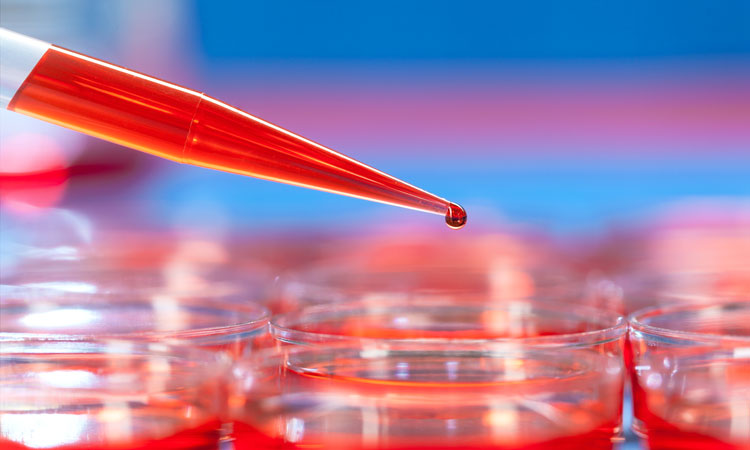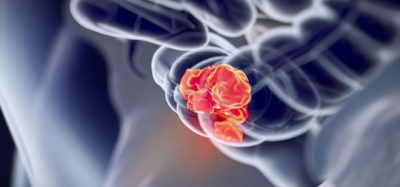Making cell culture models more physiologically relevant
Posted: 22 June 2021 | Robert Skolik (University of Louisville) | No comments yet
A major limitation in drug development is the occurrence of drug-candidate toxicity during clinical research. This may occur because tumour-derived cell lines are limited as a pre-clinical model – in part because of an altered metabolic poise. A recent study has revealed a profound plasticity in gene expression and metabolic poise that can be exploited by replacing glucose with galactose in the cell culture medium. Here, Robert Skolik, a researcher from the study, explains how the galactose‑induced cellular phenotype is more reminiscent of a primary hepatocyte, which may aid in the early detection of hepatotoxic compounds.

Development of novel medications is becoming increasingly difficult and expensive. The average cost to bring a new drug to market is close to $1 billion and often takes over a decade. This is in part because nearly 88 percent of drugs reaching clinical trials fail to gain final US Food and Drug Administration (FDA) approval.1 Drug-induced toxicity is responsible for nearly half of these failures, despite extensive investment in pre-clinical toxicity screenings. The liver is most frequently affected by drug-induced toxicity, which is not surprising considering…
Development of novel medications is becoming increasingly difficult and expensive. The average cost to bring a new drug to market is close to $1 billion and often takes over a decade. This is in part because nearly 88 percent of drugs reaching clinical trials fail to gain final US Food and Drug Administration (FDA) approval.1 Drug-induced toxicity is responsible for nearly half of these failures, despite extensive investment in pre-clinical toxicity screenings. The liver is most frequently affected by drug-induced toxicity, which is not surprising considering it is the organ responsible for concentrating and metabolising the vast majority of drugs. While most drugs are harmlessly eliminated from the body, certain drugs and intermediates produced from drug metabolism compromise liver function by harming various cellular components (eg, the mitochondria). Furthermore, many toxic compounds reach clinical trials because they are not identified as hepatotoxic during pre‑clinical research. Early detection of cellular drug toxicity prior to clinical trials therefore represents a significant area for improvement in the current drug development process.
The use of cell lines in toxicity screens
Tumour-derived cell lines are one of the most common models used during initial toxicity screening. Tumour cells proliferate rapidly and are relatively cheap and easy to maintain. In particular, hepatocellular carcinoma cell lines (such as the HepG2 line) are often used as a model for hepatotoxicity due to the continued expression of several hepatocyte-specific genes. Unfortunately, toxicity screens performed with HepG2 cells often fail to identify a wide range of harmful compounds.2 One reason HepG2 cells may show a desensitisation to drug-induced toxicity is the result of a cancer cell-specific metabolic poise observed in tumour-derived model cell lines.
Tumour-derived cells are commonly cultured in medium supplemented with high glucose concentrations to maximise proliferation rates. This activates biosynthetic pathways by increasing glycolytic flux, shifting adenosine triphosphate (ATP) production from mitochondrial oxidative phosphorylation (OXPHOS) to substrate‑level phosphorylation during glycolysis. Flux through glycolysis may be several hundred-fold upregulated in these cells when compared to non‑cancerous primary liver cells.3 In comparison, primary hepatocytes do not exhibit this glycolysis‑based biosynthetic poise and depend primarily on mitochondrial OXPHOS for ATP production. These differences limit detection of drug-induced mitochondrial damage in HepG2 cells, which is one of the primary underlying causes of hepatotoxicity.4 For example, many of the top selling prescription and over-the-counter medications associated with hepatotoxicity have been demonstrated to disrupt mitochondrial function.5 This desensitisation of HepG2 cells to drug-induced mitochondrial toxicity, coupled with additional limitations in the downstream in vivo pre-clinical rodent models, increases the risk of hepatotoxic drugs reaching clinical trials because they evaded current toxicity screens.
Changing the cell media
In 2007, Marroquin, et al. discovered that replacing glucose with galactose in culture medium increases the sensitivity of HepG2 cells to drug‑induced mitochondrial damage.6 This simple, yet effective, approach forces HepG2 cells to shift ATP production from substrate-level phosphorylation during glycolysis to mitochondrial OXPHOS. Substituting glucose with galactose since has been applied to a wide range of tumour-derived cells, however the changes and mechanisms underlying this observation remain uncharacterised. Furthermore, there is some misconception in the literature that this shift towards OXPHOS is due to a reduced net-yield of ATP if galactose is channelled into glycolysis via the Leloir pathway compared to glucose, which is not the case.7 However, cells grown in galactose medium do have slower proliferation rates, reduced rates of lactate production and show increased mitochondrial OXPHOS rates. Tumour-derived cells shifted to galactose medium likely transport and/or metabolise galactose at a slower rate compared to glucose. This in turn likely limits the ability of substrate-level phosphorylation during glycolysis to sustain ATP production.
Surprisingly, the utility of HepG2 cells has not been developed fully despite these promising initial improvements for the detection of toxicity”
Surprisingly, the utility of HepG2 cells has not been developed fully despite these promising initial improvements for the detection of toxicity. This is partly because it is unclear how closely HepG2 cells can be shifted to reflect a primary hepatocyte. For example, it is unclear what culture conditions induce the most robust metabolic shift and whether the metabolic shift is connected to a more global reorganisation in the protein expression profile. Until recently, galactose-induced changes to HepG2 cells had not been characterised beyond the assessment of lactate production and oxygen consumption rates. This lack of development has limited identification of drug-induced hepatotoxicity by HepG2 cells.
In our recent study, which was a team effort between biologists (Dr Menze’s lab at the University of Louisville), chemists (Dr Konkle’s lab at Ball State University) and engineers (Dr Chakraborty’s lab at University of Michigan – Dearborn), we performed the first global characterisation of the metabolic and genomic restructuring that occurs in HepG2 cells adapted to galactose medium for at least four weeks.8 Prior to our study, it was unclear what conditions may promote a robust shift in HepG2 which would be reflective of primary hepatocytes. We found that HepG2 cells cultured with galactose in medium supplemented with dialysed foetal bovine serum (FBS) (12 – 14 kDa) had the most robust increase in mitochondrial OXPHOS. Residual glucose in standard (non‑dialysed) FBS compromised this transition. We also observed that HepG2 cells proliferate for up to 30 weeks in galactose medium and longer adaption results in higher oxygen consumption. These results suggested an ongoing transcriptional shift toward a poise closer reflecting a primary hepatocyte.
Promising findings
After optimising conditions to produce a robust metabolic shift, we then performed a comprehensive characterisation of glucose- and galactose‑adapted HepG2 cells by performing RNAseq, targeted metabolomics and Raman hyperspectral imaging on HepG2 cells grown in the presence of either glucose or galactose media supplemented with dialysed FBS for four weeks. Collectively, we observed extensive restructuring on the transcriptomic and metabolomic levels in the central metabolic pathways (glycolysis, TCA cycle, pentose phosphate pathway). These results indicated decreased glycolytic flux and increased dependence on amino acid catabolism to support OXPHOS activity.
Pre-clinical models need the highest level of sensitivity to toxic compounds without compromising the ability to support rapid assessment of large compound libraries”
Furthermore, biosynthetic flux appeared to decrease through the pentose phosphate pathway, resulting in downstream effects such as a 10-fold reduction in cellular nicotinamide dinucleotide (NAD) levels. The Chakraborty lab developed a novel Raman hyperspectral imaging approach which captured a change to subcellular redox states reflecting a shift in global metabolic poise. Finally, RNAseq revealed an enrichment in hepatocyte-specific transcripts in galactose adapted HepG2 cells. For example, expression was upregulated for genes involved in phase I and phase II drug metabolism. These results indicate a continual shift at the transcriptomic and metabolomic level in HepG2 cells grown in galactose medium. The resulting poise of galactose-adapted HepG2 cells becomes more reminiscent of a non-cancerous primary hepatocyte and likely increases sensitivity to a wide range of hepatotoxic compounds.
Conclusion
Pre-clinical models need the highest level of sensitivity to toxic compounds without compromising the ability to support rapid assessment of large compound libraries. Tumour‑derived cells grown in glucose are an industry standard because they proliferate continuously and are useful to detect toxic compounds. However, the high rate of drug‑induced organ toxicity in clinical trials suggests a limitation in toxicity detection. This is in part because screens performed using tumour-derived cells cultured with glucose do not adequately mimic this vulnerable tissue. Our study reveals a profound metabolic plasticity that can be exploited in HepG2 cells to improve the detection of hepatotoxic compounds. Adaptation of HepG2 cells to galactose medium is a simple yet effective method to shift global metabolic poise without compromising proliferation. Similar results likely can be accomplished in additional cell line derived models used for pre-clinical toxicity screens. We hope these results convey both the limitations and potential of tumour-derived cells in the current drug development pipeline.
Acknowledgements
This work would not be possible without a cross-disciplinary collaboration between a chemist (Dr Mary Konkle, Ball State University), two engineers (Jason Solocinski and Dr Nilay Chakraborty, University of Michigan – Dearborn) and my advisor (Dr Michael Menze, University of Louisville).
About the author
Robert Skolik is a doctoral candidate in the biology department at the University of Louisville under the guidance of Dr Michael Menze. His research integrates biochemical and cellular approaches to elucidate the role of mitochondria in diseases such as cancer and diabetes. His work is currently focused on improving the physiological relevance of common cell culture models for application in disease research and drug discovery.
References
- 1. Wouters OJ, McKee M, Luyten J. (2020) Estimated Research and Development Investment Needed to Bring a New Medicine to Market, 2009-2018. JAMA. 2020; 323: 844-853.
- Schoonen WG, de Roos JA, Westerink WM, Debiton E. Cytotoxic effects of 110 reference compounds on HepG2 cells and for 60 compounds on HeLa, ECC-1 and CHO cells. II mechanistic assays on NAD(P)H, ATP and DNA contents, Toxicol In Vitro. 2005; 19: 491-503.
- Vander Heiden MG, Cantley LC, Thompson CB. Understanding the Warburg effect: the metabolic requirements of cell proliferation, Science. 2009; 324: 1029-1033.
- David S, Hamilton JP. Drug-induced Liver Injury, US Gastroenterol Hepatol Rev. 2010; 6: 73-80.
- Will Y, Shields JE, Wallace KB. Drug-Induced Mitochondrial Toxicity in the Geriatric Population: Challenges and Future Directions, Biology (Basel). 2019; 8 (2): 32.
- Marroquin LD, Hynes J, Dykens J, et al. Circumventing the Crabtree effect: replacing media glucose with galactose increases susceptibility of HepG2 cells to mitochondrial toxicants, Toxicol Sci. 2007; 97: 539-547.
- Frey PA. The Leloir pathway: a mechanistic imperative for three enzymes to change the stereochemical configuration of a single carbon in galactose, Faseb J. 1996; 10: 461-470.
- Skolik RA, Solocinski J, Konkle ME, et al. (2021) Global Changes to HepG2 Cell Metabolism in Response to Galactose Treatment, Am J Physiol Cell Physiol. 2021; 320 (5): C778-C793.
Related topics
Cell Cultures, Cell-based assays, Drug Development, Screening, Toxicology
Related conditions
hepatocellular carcinoma (HCC)
Related organisations
Ball State University, IDBS, University of Louisville School of Medicine, University of Michigan (U-M), US Food and Drug Administration (FDA)
Related people
Dr Mary Konkle, Dr Michael Menze, Dr Nilay Chakraborty, Jason Solocinski, Lisa Marroquin







